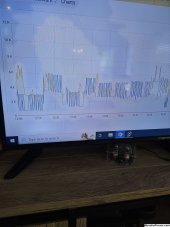ksmithaz1
Solar / EV Junkie
HmmI think most “average” homes in America would have a hard time accidentally overloading 18kw of continuous output.
I think 12kw/50a is “doable” for even suburbia with some basic load management. Sometimes it’s the people who need to adjust more than the equipment.
If we really consider how much energy we are consuming it’s a bit surreal
Hot water heater ~ 16A continuouos
Clothes Dryer ~16A continuous
Oven / Range baking with a couple of surface units 24A continuous
4T HVAC in the summer in Phoenix 24A continuous (Lets not talk startup, but literally 8+ hours without turning off sometimes)
I count 80A of potential simultaneous demand before anyone turns on a blow dryer, coffee pot, toaster oven microwave, air fryer. None of which by themselves are a problem.
Demand is a bitch, but that 1800 watt blow dryer doesn't actually pull 15A. 10@110 maybe.
My two fridges pull practically nothing, and they are not exactly new.
Throw in 32A to charge the EV and we tossed 50A by the wayside. I put an "EV" switch in to keep the HWH and dryer from running at the same time, priority to the dryer. Get a slightly larger home with two HVAC's , maybe an undersink HWH, or better yet a 50A demand HWH, that's fun. If you want to be off-grid, you have to have enough output to meet your highest demand. Most folks who live north have gas or oil for heating, and may not have an air conditioner or electric range or ... In which case ~50A is probably more than enough. Then again if you are rural you may have a well pump and drain field, possibly a sewage pump.
The "average" all electric home tends to have very high demand needs. I for one don't want to pay the gas company or the electric company so . . . My basic load management was to keep it under 100A.
Also Note: There is an 80% rule you should never run any breaker over 80% for more than 3-5 hours. Really that is kinda long, keep heating it and it will die on you.




